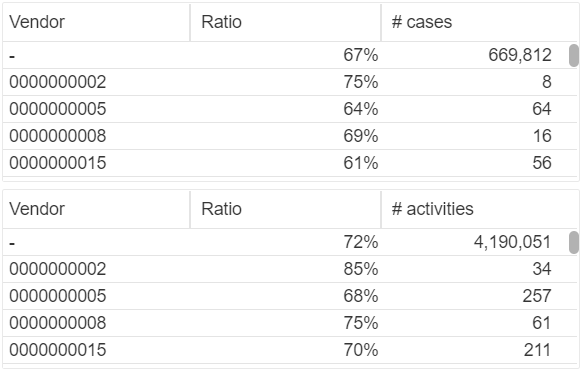Hello,
ive the following issue:
The PQL Formula Ratio of Cases flowing through a dedicated activity is used to determine the % of cases that do contain activity Remove Delivery Block. Putting this formula into a number element - works fine. Shows 20%.
The same 20% appears when the activity Remove Delivery Block is marked in the process explorer.
In my example i have 340 cases, where 68 do have Remove Delivery Block.
The 340 cases to have 4389 activities in total, the 68 cases having the acitvity Remove Delivery Block do have 1229 activities.
If the KPI Ratio is put into an OLAP Table and shown with dimensions like Company or Sales Org the Ratio moves from 20% to 28%. I figured out that the formula is changing from a case % (68 out of 340) to an activity related calculation (1229 out of 4389) - this does always happen if any characteristic that is joined to the activity table is shown in the OLAP Table.
In addition - the same applies - the other way around if sum(vbap.net_order_value) is taking place and a activity based condition is applied - the order value is getting multiplied with the number of activities.
Is there any solution that i can apply? Thanks in advance.
Regards,
Holger



 In case of any question, please feel free to reach out.
In case of any question, please feel free to reach out.